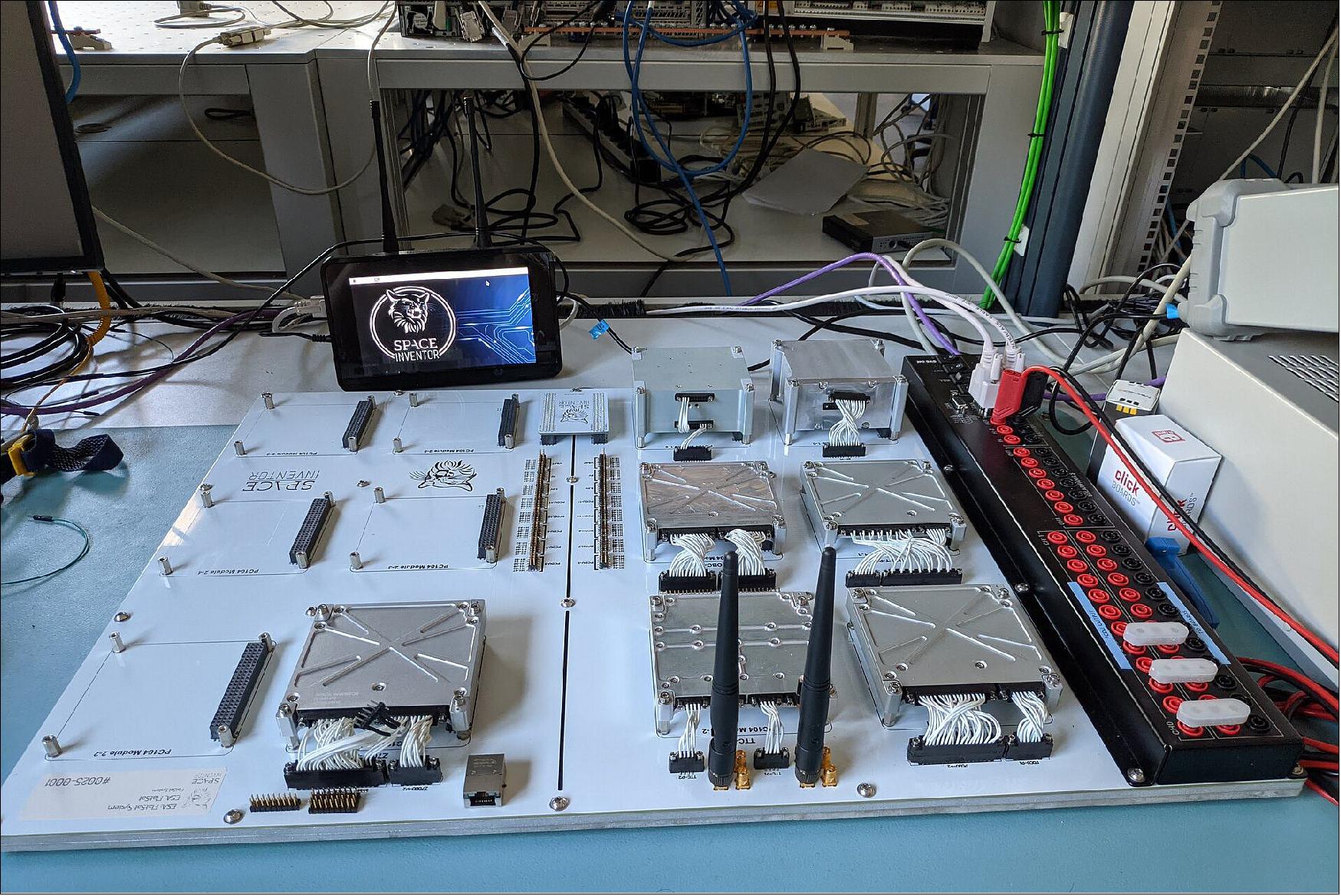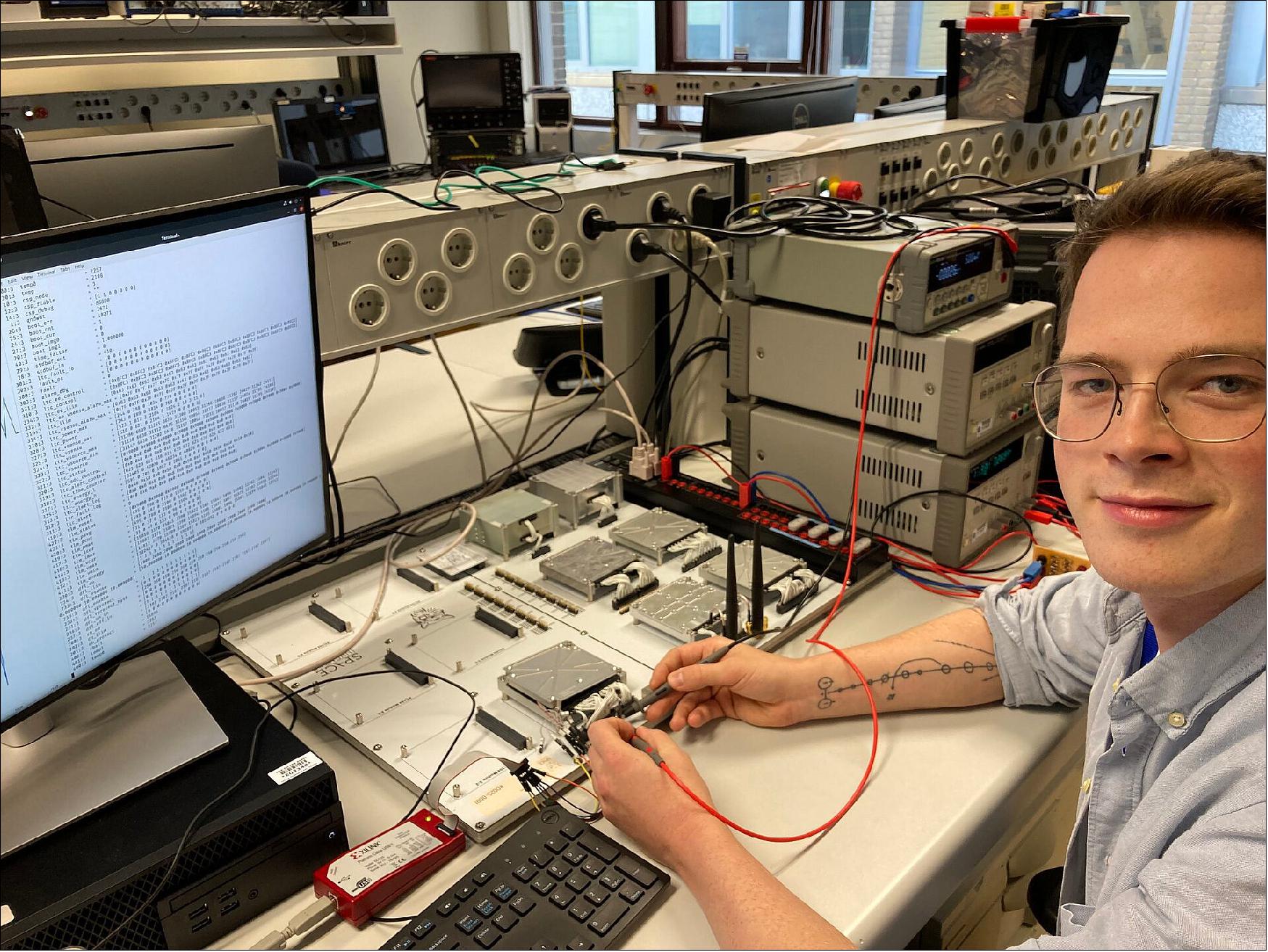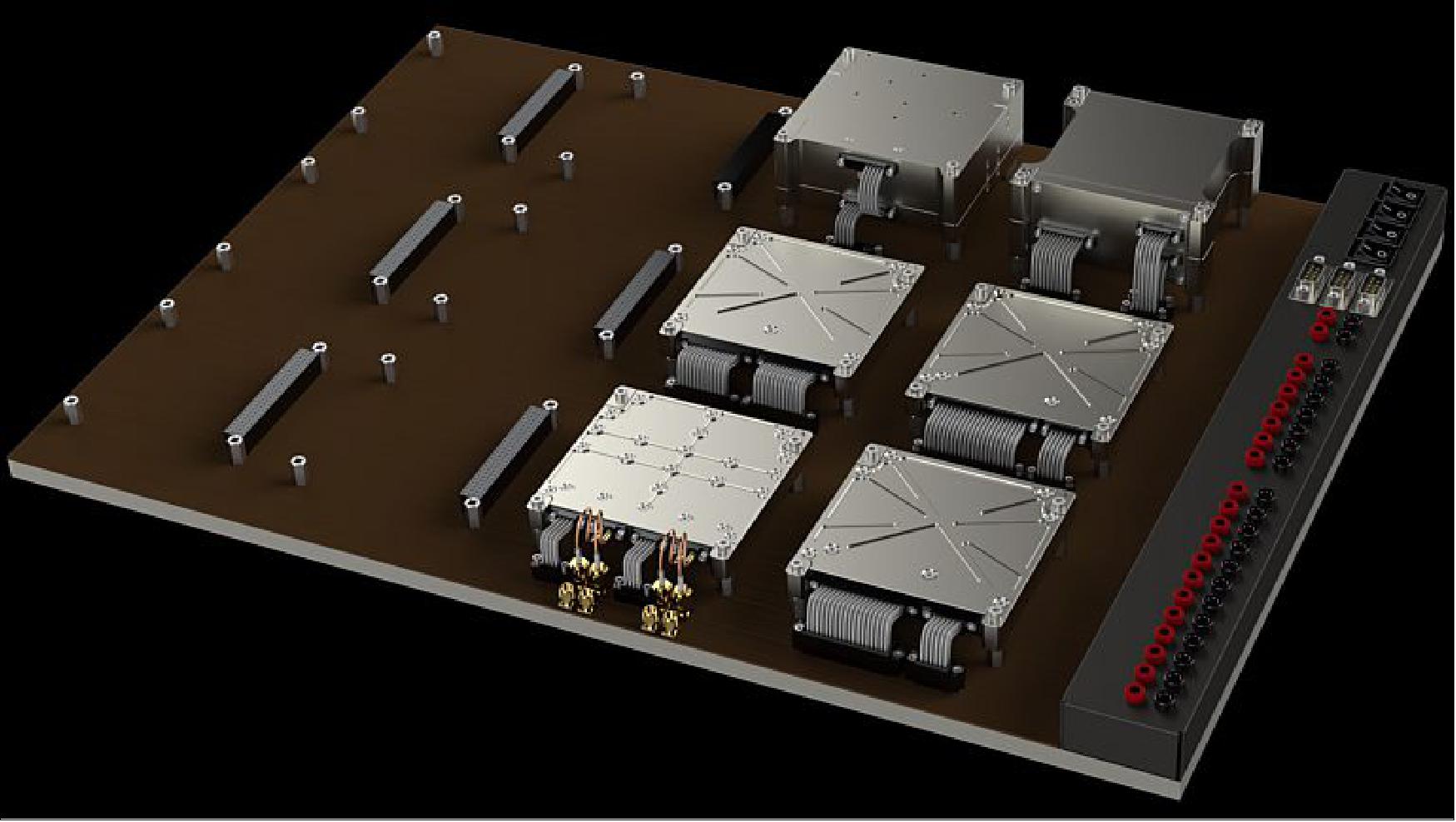FlatSat (ground-based testbed for CubeSats)
Ground Segment
FlatSat — a ground-based testbed for CubeSats at ESA/ESTEC
ESA’s latest CubeSat mission is destined to never leave the ground. Instead it is doing its duty as an opened-out ‘FlatSat’ – with its interlinked subsystems spread out across a table at the Agency’s Data Systems and Microelectronics Laboratory at its ESTEC technical center in the Netherlands. 1)

“This dissembled CubeSat has all its subsystems easily accessible,” explains ESA Young Graduate Trainee Malte Bargholz, working on the FlatSat project. “This includes its on-board computer, radio and telemetry, its attitude and orbit control system, battery and power system and satellite navigation receiver, along with additional slots to plug in external hardware”.
”This setup allows the team to access and test everything in a straightforward way, compared to a normal satellite where everything ends up tightly integrated and packed together – especially in the case of miniaturized CubeSats. We can also try out new approaches for operating such missions, and test the interoperability of various commercial CubeSat components.” CubeSats are increasingly finding operational and commercial uses, while ESA is employing them for a series of ambitious technology in-orbit demonstration missions.
“Our section is supporting a lot of new CubeSat activities, with numerous new subsystems on the way, and we need to be able to test them in a representative way,” notes Tomasz Szewczyk of ESA’s On-Board Computer and Data Handling Section.
“With this FlatSat in our lab we can simply plug parts in and test them on a functional level: are they working properly with the rest of the satellite? FlatSats have previously been created for larger missions, but this is the first time we have created a complete CubeSat version in ESA, allowing us to become familiar with the families of low-cost components employed within this fast-evolving satellite sector.”
The tabletop FlatSat operates as if it were in orbit, allowing complete end-to-end operations: telecommands arrive via a radio link from a small ‘ground station’ – in fact a small Raspberry Pi variant with aerials attached. Telemetry can be downlinked and sampled in turn for analysis. The subsystems making up the FlatSat were supplied by satellite engineering company SpaceInventor in Aalborg, Denmark.
FlatSat has been successfully used by two TU Delft students in their master thesis to test FDIR (Failure Detection, Isolation and Recovery) algorithms and evaluating new scientific payloads for radiation monitoring. On top of that, a new CubeSat On-Board Computer, incorporating a radiation-tolerant microcontroller, is currently being tested. Developed by Skylabs in Slovenia this project is being supported through ESA’s General Technology Support Program, readying new promising hardware for space.
The lab will also be working closely with ESA’s new CubeSat Systems Unit, devoted to the design and development of these miniature missions, including the study of payloads employing AI.
Having studied embedded systems for his undergraduate degree, Malte was inspired to come to ESTEC by a long-term interest in space and how embedded system work in such a harsh environment. He will spend another year as a Young Graduate Trainee in which he, along with other tasks, plans to integrate an AI-based detection algorithm into the newly arrived payload computer for the FlatSat.

Overview
Space Inventor of Aalborg, Sweden, has won a contract with ESA/ESTEC to design and build a flatsat-style test bed with all Space Inventor’s satellite avionics products installed. 2)
A flatsat is a large motherboard where satellite avionics modules can be installed and connected as if it was inside a real satellite. Space Inventor’s new flatsat has 12 slots that support installation of either Space Inventor satellite modules or PC-104 modules. When fully populated with Space Inventor’s modules, the flatsat test bed makes it possible to train the operation of a complete satellite while having the flexibility to swap out systems and try different configurations as well as develop and test user software.
Space Inventor’s flatsat testbed is supplied with all the core avionics products required for a small satellite:
• Maximum power point tracker optimizes the power input from solar panels
• Power conditioning unit supplies protected and conditioned power to the satellite
• Battery electrical energy storage
• On-board computer to run mission software
• SDR computer highly capable computer for real-time data processing
• Attitude control system with wheels, torquers, IMU and computer
• Ground support equipment ground station radio and flatsat interface computer.

References
1) ”Opened-out ‘FlatSat’ for CubeSat testing,” ESA Enabling & Support, 20 October 2021, URL: https://www.esa.int/Enabling_Support/
Space_Engineering_Technology/Opened-out_FlatSat_for_CubeSat_testing
2) ”Designing and Building a Flatsat for ESA/ESTEC,” Space-Inventor, 24 June 20220, URL:
https://space-inventor.com/designing-and-building-a-flatsat-for-esa-estec/
The information compiled and edited in this article was provided by Herbert J. Kramer from his documentation of: ”Observation of the Earth and Its Environment: Survey of Missions and Sensors” (Springer Verlag) as well as many other sources after the publication of the 4th edition in 2002. Comments and corrections to this article are always welcome for further updates (eoportal@symbios.space).